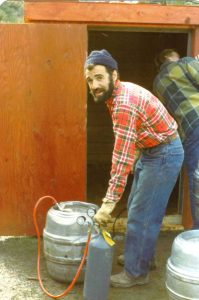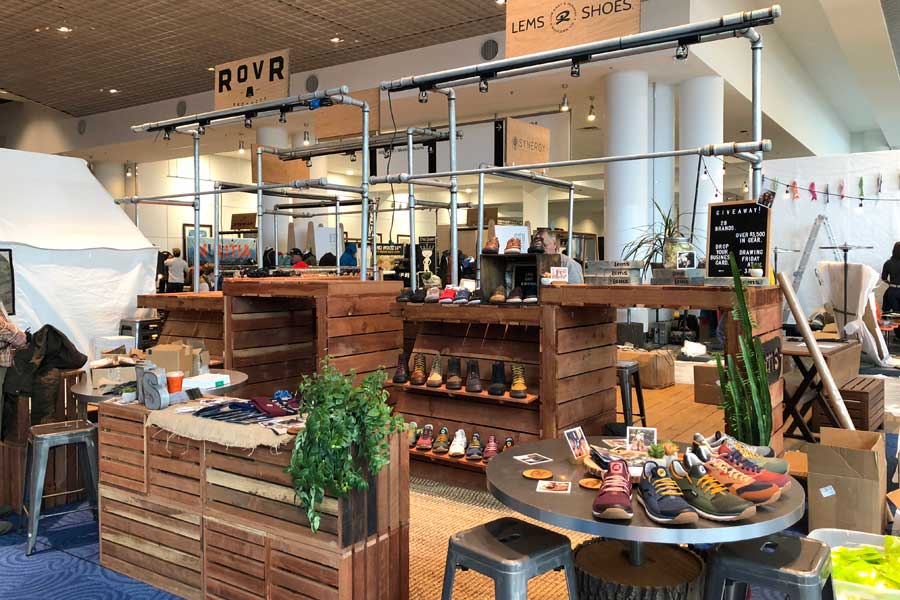Boulder beermeister Charlie Papazian retires; his brewer’s spoon goes to the Smithsonian
02 Jun 2018
Papazian is known worldwide for inspiring independent brewers
By Jules Marie Boulder beermeister Charlie Papazian may have hung up his brewer’s apron on his 70th birthday this year, but the wooden spoon he used for home brewing, along with his handwritten brewing instructions, are on display at the Smithsonian Institution. Papazian is known worldwide for inspiring thousands of independent brewers to follow their dreams of crafting delicious beer. His first of many books, The Complete Joy of Home Brewing, has gained iconic status and is referred to as the “bible of home brewing.”
Craft brewers collaborate—support can be given to each other while still competing with each other.When President Jimmy Carter deregulated home brewing in 1978, it became a popular hobby, with many brewers starting business ventures. Papazian quickly championed home brewers by establishing the Association of Brewers and the American Homebrewers Association, which today are part of the Brewer’s Association (BA). He founded the Great American Beer Festival and the World Beer Cup, and launched Zymurgy magazine for homebrewers and The New Brewer Magazine for professional craft brewers. In 1979, only 89 breweries existed in the United States. Today, there are more than 6,000 craft breweries and 1 million home brewers, with sales eclipsing $23 billion as the industry continues its rapid expansion. Papazian never imagined that small-batch brews would become so deeply ingrained in America’s beverage scene. We sat down with Papazian to get his take on the current state of brewing and what’s next for him.
What does retirement look like?
I’m looking forward to unanticipated and unexpected opportunities! What happens happens. The best things that have ever happened in my life have been totally unanticipated and unexpected opportunities and I’ll take that. Of course I’ll continue to make homebrew. It’s like canoeing rapids—where you don’t know what’s around the bend or the next rock and you pick your course at the last moment—and that’s what I’ll continue to do. My next opportunity will just be an extension of what I like to do now.What does tomorrow look like?
For the past two and a half years I’ve been organizing and compiling scattered records of the association’s 40-year history. I’ve cataloged 140,000 photographs taken over the past 20 years and interviewed 140 pioneers of the brewing world. These records will be publicly accessible.Who do you think of as pioneers?
Pioneers are brewers that have been around 20 years or longer: You have Boulder Beer, Sierra Nevada, Boston Beer, a whole host of Portland breweries and you even have some legacy brewers like Matt and Saraneck Brewing, which is a 100-year old brewing family. Now we have Oscar Blues, Dogfish Head and Mountain Sun.Did you imagine your wooden homebrew spoon and two 40-year-old handwritten pages on how to brew beer at home would wind up on display at the Smithsonian Institution?
Maybe if I drank too much homebrew and I was off in outer space dreaming about stuff, I may have thought about it! The cool thing about that spoon is that once that story was published I got emails from friends I knew 20 or 30 years ago that said, “I touched that spoon! I was in your class!” There was a lot of energy in that spoon. It was a reflection of the energy that was in the air during that time that’s been passed on from brewer to brewer.What’s changed among small, independent brewers?
Initially, there weren’t any brewers making over 5,000 barrels, so they were all microbrewers. Fundamentally, brewing hasn’t changed that much; ingredients have, though. Forty years ago there were only one or two hop varieties available that were special enough to use. Now, there are literally hundreds of hop varieties because small, independent craft brewers love experimenting in a way brewers didn’t dream of 40 years ago. Malt, barley, rye, quinoa or buckwheat are used now because beer drinkers have educated themselves and are willing to try new flavors.How do you feel about big brewers buying small brewers?
I don’t have a problem with businesses buying other business. What does concern me is transparency: The quality isn’t an issue, just the labeling—truth in labeling. If the brand is owned by a big brewer I want the consumer to be aware of who made the beer so they can make an informed choice. People don’t want to be fooled. The BA offers an independent craft brewer seal and certain qualifications are required to earn it. It helps keep brewers honest.Do you see similarities between the rise of craft distilleries and craft breweries?
Yes, there are similarities between what craft brewers have done and what craft distillers, kombucha makers and small independent coffee roasters are doing. It’s part of the sensibility of supporting local, small, independent businesses and getting consumers to understand the value of supporting them and what their impact is on the community. Big businesses have the resources to market and advertise and small independent brewers need to band together because they don’t have the resources. Craft brewers collaborate—support can be given to each other while still competing with each other.Raise a glass and toast to Charlie’s retirement the next time you’re enjoying a craft beer. Follow his daily 3 p.m. tweets at @CharliePapazian or follow the Brewers Association at www.brewersassociation.org.












